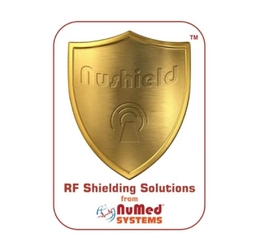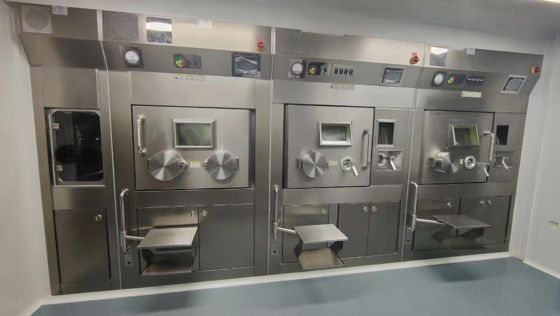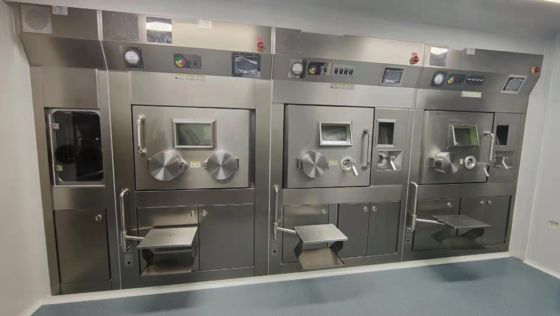Alle Produkte
-
Kupferne Folien-Abschirmung
-
Rf schirmte Türen ab
-
Rf-Schutzfenster
-
Strahlenschutz-Bleiglas
-
Nicht magnetischer Werkzeugsatz
-
Kernstrahlenschutz
-
Detektor der radioaktiven Strahlung
-
Rf schirmte Kammer ab
-
Bienenwaben-Wellenleiter-Belüftungsöffnungen
-
Leitfähiges klebendes kupfernes Band
-
Kupferdraht-Maschendraht
-
Röntgenbleiglas
-
EMI Shielding Gasket
-
Elektrisch leitfähiges Gewebe
-
Strahlenschutz-Tür
-
Strahlenschutz X Ray
-
Faraday-Käfig MRI
-
Kupferdrahtwolle
-
Beleuchtung MRI LED
-
Nicht magnetischer Rollstuhl
-
Nicht magnetische Bahre
-
 AnekdotenMessingbienenwabenentlüftung schaut sehr Nizza
AnekdotenMessingbienenwabenentlüftung schaut sehr Nizza -
 SatheeshMRI-/RFtüren glänzen mit Griffen, danke mein Freund.
SatheeshMRI-/RFtüren glänzen mit Griffen, danke mein Freund.
GMP Standard AI Control System Dispensing Hot Cell with Ultraviolet Ozone Disinfection and Grade A Clean Environment
| Herkunftsort | CHINA |
|---|---|
| Markenname | Jovi |
| Modellnummer | JVVMED-HC |
| Dokumentieren | JVVMEG-HCD100-RFM.pdf |
| Min Bestellmenge | 1 Set |
| Preis | $34695~$106985 |
| Verpackung Informationen | in Holzgehäuse |
| Lieferzeit | 25 Arbeitstage nach Erhalt Ihrer Zahlung |
| Zahlungsbedingungen | T/t im Voraus |

Treten Sie mit mir für freie Proben und Kupons in Verbindung.
whatsapp:0086 18588475571
Wechat: 0086 18588475571
Skype: sales10@aixton.com
Wenn Sie irgendein Interesse haben, leisten wir 24-stündige Online-Hilfe.
xProduktdetails
| Schutzniveau | 10mmPb | Zertifizierungen | Erfüllt internationale Sicherheitsstandards |
|---|---|---|---|
| Schließung | Sicheres Verschlusssystem | Strahlenschutz | Wirksam |
| Schutzstandard | Front 40mPb oder maßgeschneiderte Bauweise | Innere Größe | 950 × 680 × 700 mm, wobei eine Abweichung von ± 5% zulässig ist |
| Zubehör | Wolframstrahlungsschutz | Lecksicherheit | Hoch |
| Produktgröße | Groß | Gewicht | Variiert je nach Größe |
| Produktname | GMP -Standard -AI -Steuerungssystem, die heiße Zelle in einer radiopharmazeutischen Produktionslinie | Bleiäquivalent für Strahlenschutz | 10 mmpb 20mmpb 50 mmpb 75 mmpb 100 mmpb |
| Zubehör | Dosis -Kalibrator, Bleidose, Wolframfläschchen, manueller Spender, automatischer Spender | Desinfektionsmethode | Ultraviolett und Ozon |
| Alternative Option | Manipulator | Radioisotopentypen | LU177, GA68, F18, I131, C11, |
| Typ der Zielgruppe | Solid Tartget, Lösungsziel , Gasziel | Anderer Service | Technisches Team bereit für die Installation |
| Hervorheben | AI Control System Dispensing Hot Cell,Ultraviolet Ozone Disinfection Hot Cell,Grade A Clean Environment Hot Cell |
||
Produkt-Beschreibung
GMP Standard AI Control System Dispensing Hot Cell In A Radiopharmaceutical Production Line
Dispensing Hot Cells
The dispensing hot cell (or vialling hot cell) in a radiopharmaceutical production line is a critical component located after the synthesis step. Its primary function is to accurately dispense synthesized and purified high-activity bulk radiopharmaceutical solution into individual dose containers (such as injection vials or syringes) under aseptic conditions for patient use.
While sharing common features with synthesis hot cells (radiation shielding, negative pressure, and HEPA filtration), the dispensing hot cell emphasizes precision, sterility, speed, and reduced operator radiation exposure.
Key Features
- Highly Optimized Radiation Shielding: Designed for specific nuclide energies (β+ or γ emitters) with enhanced front shielding and "L"-shaped shield blocks to minimize operator exposure.
- Sterility Assurance Design: Features Grade A clean environment (ISO Class 5), high-grade stainless steel surfaces, and pass-through transfer systems to maintain product integrity.
- Precision Automated Dispensing: Incorporates high-precision pumps with microliter accuracy, integrated radioisotope measurement, and multi-tasking capabilities for vial and syringe filling.
- User-Centric Operation: Intuitive software interface, ergonomic design, and simplified decontamination procedures enhance operational efficiency.
- Comprehensive Monitoring: Includes process visualization and automated data recording for complete traceability and regulatory compliance.
Dispensing Hot Cell vs. Synthesis Hot Cell: Core Differences
| Feature | Dispensing Hot Cell | Synthesis Hot Cell |
|---|---|---|
| Primary Function | Aseptic Dispensing & Dosimetry | Chemical Synthesis & Purification |
| Cleanliness Requirement | Grade A (ISO 5), Highest Standard | Grade C or A (ISO 7 or 5) |
| Process Focus | Precision, Speed, Sterility | Chemical Reaction Efficiency, Purity, Yield |
| Typical Equipment | Dose Calibrator, High-Precision Dispensing Pump, Crimper | Chemical Reactor, HPLC, Solid-Phase Extraction Columns |
| Automation Focus | Sequential control of dispensing, capping, labeling | Process control of temperature, pressure, liquid transfer |
Summary
The dispensing hot cell serves as the final checkpoint for radiopharmaceuticals before clinical application, functioning as a high-speed, high-precision, ultra-clean radioactive dispensing system. All designs focus on three critical objectives:
- Patient Safety: Ensuring each dose is sterile, apyrogenic, and precisely accurate
- Operator Protection: Minimizing radiation exposure through optimal shielding and full automation
- Regulatory Compliance: Meeting all GMP requirements for sterile pharmaceutical production and data integrity
Empfohlene Produkte




